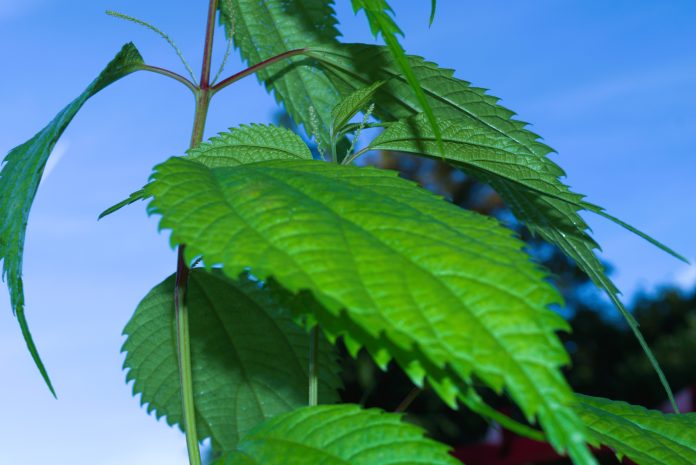Plant classification—what it means, why it matters, and how it can help you when buying plants for your garden or home.
If you’ve ever been puzzled by the names on plant labels or wondered why some plants are grouped together, stay tuned, because we’re breaking it all down today.
Let’s start with the basics. Plant classification is the way botanists organize plants into groups based on shared characteristics. It’s a hierarchical system, going from broad categories like the Plant Kingdom all the way down to individual species. But why is this important, especially when you’re buying plants? How does knowing a plant’s classification help you make better choices for your garden? Let’s dig in.
Why Classification Matters When Buying Plants
Understanding plant classification is crucial when selecting the right plants for your home or garden. It helps you know how a plant will behave and what it needs to thrive. For instance, plants from the same genus or family often have similar care requirements. If you know that a plant belongs to the Cactaceae family, you’ll immediately recognize that it’s likely drought-tolerant and won’t need much watering—perfect for a low-maintenance, sunny garden.
On the other hand, plants from the Rosaceae family, like roses, may have higher water and nutrient needs. Knowing this upfront can save you from choosing a plant that might struggle in your environment. By understanding how plants are grouped, you can make better decisions that fit your garden’s climate, soil, and light conditions.
How Plants Are Classified
Now, let’s talk about the criteria used to classify plants. Traditionally, plants were grouped based on physical characteristics, like leaf shape, flower structure, and root systems. But as botany has advanced, other factors have become just as important. Here are the main criteria:
- Morphological Features: This includes a plant’s visible traits—leaves, flowers, stems, and roots.
- Reproductive Structures: Flowering plants are classified based on how they reproduce, while non-flowering plants, like ferns, are grouped by how they produce spores.
- Genetics: DNA technology now plays a major role in plant classification, revealing relationships that weren’t obvious before.
- Growth Habits: Whether a plant is a tree, shrub, or vine also influences its classification. For instance, both pea plants and acacia trees belong to the Fabaceae family because they share similar flower structures.
- Ecological Adaptations: Plants are also classified by how they adapt to their environments. Desert plants, aquatic plants, and tropical plants have evolved differently, and these adaptations help group them.
Plants are classified using a hierarchical system known as taxonomy, which organizes them based on shared characteristics, from the most general (kingdom) to the most specific (species). The classification system includes several levels, or ranks, that describe the relationships between plants. Plant names, particularly their scientific (binomial) names, usually reflect parts of this classification, mainly the genus and species.
How Plants Are Classified
The primary levels of classification for plants are:
- Kingdom: The broadest category. All plants belong to the Plantae kingdom.
- Phylum/Division: Plants are divided into large groups based on key characteristics like the presence of vascular tissues or seeds. Common divisions include:
- Bryophyta: Non-vascular plants (e.g., mosses).
- Pteridophyta: Seedless vascular plants (e.g., ferns).
- Coniferophyta: Cone-bearing plants (e.g., conifers).
- Magnoliophyta (Angiosperms): Flowering plants.
- Class: Further subdivides plants based on specific characteristics.
- Examples: Monocotyledons (monocots), Dicotyledons (dicots).
- Order: Groups plants with similar features and evolutionary traits. For instance, the order Rosales includes roses and other flowering plants.
- Family: Groups related plants together. Plants in the same family share more similarities.
- Examples:
- Rosaceae: The rose family, which includes roses, apples, and strawberries.
- Asteraceae: The daisy family, including sunflowers, asters, and daisies.
- Examples:
- Genus: A group of closely related species. The genus name is always capitalized and italicized in scientific names.
- Example: Rosa (roses), Quercus (oaks), Acer (maples).
- Species: The most specific level of classification, referring to individual plants that can breed and produce fertile offspring. The species name is lowercase and italicized in scientific names.
- Example: Rosa gallica, Quercus alba.
- Variety/Subspecies/Cultivar: These levels refer to variations within a species that have distinct traits.
- Example: Brassica oleracea var. capitata (cabbage), Rosa gallica ‘Officinalis’ (Apothecary’s Rose).
What Appears in Plant Names
Plant names, particularly scientific names, reflect the genus and species, and sometimes additional categories like variety or cultivar. Here’s how each part relates to the classification system:
- Genus: This is the first part of the scientific name and is always capitalized.
- Example: In Rosa gallica (“gallica rose”), Rosa is the genus.
- Species: The second part of the scientific name identifies the specific plant within the genus and is not capitalized.
- Example: In Rosa gallica, gallica is the species.
- Variety/Subspecies: This optional part of the scientific name comes after the species and indicates a naturally occurring variation within the species.
- Example: Brassica oleracea var. italica (broccoli), where “italica” is the variety.
- Cultivar: A cultivated variety of the plant, often bred for particular traits. It is written in single quotation marks and not italicized.
- Example: Rosa gallica ‘Officinalis’ is a specific cultivar of the gallica rose.
Common Names vs. Scientific Names
In addition to scientific names, plants often have common names, which may refer to their characteristics, habitat, or origin. Common names are not standardized and can vary widely between regions or languages.
Examples of Plant Names and Their Classification
- Rose (Rosa gallica):
- Kingdom: Plantae
- Division: Magnoliophyta (Flowering plants)
- Class: Dicotyledons
- Order: Rosales
- Family: Rosaceae (Rose family)
- Genus: Rosa
- Species: gallica
- Common name: “French Rose”
- Oak (Quercus alba):
- Kingdom: Plantae
- Division: Magnoliophyta
- Class: Dicotyledons
- Order: Fagales
- Family: Fagaceae (Beech family)
- Genus: Quercus
- Species: alba
- Common name: “White Oak”
- Corn (Zea mays):
- Kingdom: Plantae
- Division: Magnoliophyta
- Class: Monocotyledons
- Order: Poales
- Family: Poaceae (Grass family)
- Genus: Zea
- Species: mays
- Common name: “Corn” or “Maize”
Conclusion
In scientific plant names, the genus and species are always present and make up the core of the plant’s identity. Occasionally, varieties or cultivars are included for further specificity. The family or other higher ranks like order are rarely mentioned in the plant name but play a crucial role in its overall classification. Common names often reflect the plant’s physical characteristics, uses, or habitat but don’t directly follow the scientific hierarchy.
All of this information helps scientists understand how plants are related to one another, but it also helps you, as a gardener, know what you’re getting into when you bring a new plant home.
Decoding Plant Labels: Why Some Plants Have Three Names
Now, let’s get to something that confuses a lot of people—those long, sometimes three-part names on plant labels. If you’ve ever looked closely at a plant tag, you’ve probably seen names like Quercus robur or maybe even something like Rosa gallica var. officinalis. What’s going on with these names?
Here’s the breakdown:
- The first word is the genus and is always capitalized. This groups closely related plants together. For example, Quercus is the genus for all oaks.
- The second word is the species and is always lowercase. It describes the specific plant within that genus. So, Quercus robur is the common oak, distinct from other oak species.
- Sometimes, there’s a third name, indicating a subspecies, variety, or cultivar. For example, Rosa gallica var. officinalis tells you that this is a specific variety of the species Rosa gallica. Cultivars, often written in single quotes like ‘Iceberg’ for a rose, are human-bred varieties selected for traits like flower color or growth habit.
These extra names tell you a lot about a plant’s specific traits and whether it’s been naturally occurring or selectively bred. So, if you see a plant with three names, it’s just a more detailed way to understand its unique characteristics.
Why Classification Matters for Your Garden
So, why does all of this matter for you, the gardener? By understanding plant classification, you’re not just learning names—you’re learning what those names tell you about how a plant will perform in your garden. It helps you avoid mistakes like planting a tropical plant in a dry climate or overwatering a drought-tolerant succulent.
Knowing the genus and species of a plant can also guide you in selecting plants with similar needs or avoiding ones that might not do well together. For example, if you already have plants in the Solanaceae family, like tomatoes or peppers, you might want to avoid planting too many other members of that family to reduce the risk of disease.
Finally, understanding plant classification and names also helps you appreciate the rich diversity of the plant world. You’ll know not just what a plant is called but how it’s connected to other plants, its origins, and how to best care for it.
Comprehensive List of Latin Descriptors in Plant Names
Let’s explore the Latin descriptors used in plant names that describe various characteristics:
Origin:
- japonicus – from Japan
- sinensis – from China
- indicus – from India
- africanus – from Africa
- australis – from southern regions (often Australia)
- orientalis – from the East
- occidentalis – from the West
- canadensis – from Canada
- europaeus – from Europe
- americana – from the Americas
- sibiricus – from Siberia
- mexicanus – from Mexico
- carolinianus – from the Carolinas (USA)
- himalayensis – from the Himalayan region
- chilensis – from Chile
- madagascariensis – from Madagascar
- italica – frpm Italy
Color:
- alba – white
- rubra – red
- niger – black
- aurea – golden/yellow
- lutea – yellow
- purpurea – purple
- violacea – violet
- caerulea – blue
- rosea – pink
- viridis – green
- argentea – silvery
- flava – yellow
- atropurpurea – dark purple
- coccinea – scarlet
- ferruginea – rust-colored
- grisea – gray
Shape and Structure:
- alternifolia – having alternate leaves
- pinnata – feather-like or divided into leaflets
- dentata – toothed or serrated
- cordata – heart-shaped leaves
- lanceolata – lance-shaped, narrow leaves
- linearifolia – linear, straight leaves
- lobata – lobed leaves
- ovata – oval-shaped leaves
- rotundifolia – round-leaved
- macrophylla – large-leaved
- microphylla – small-leaved
- spathulata – spoon-shaped leaves
- oblongata – oblong-shaped
- filiformis – thread-like
- fusiformis – spindle-shaped
- trilobata – three-lobed
- quadrifolia – having four leaves
- teretifolia – cylindrical leaves
Growth Habit:
- repens – creeping or trailing
- prostrata – lying flat or creeping
- scandens – climbing
- vulgaris – common
- sativa – cultivated, used in agriculture
- arborea – tree-like
- sempervirens – evergreen
- gigantea – giant or very large
- compacta – compact, dense growth
- pubescens – covered with fine hairs
- glabra – smooth, without hairs
- tomentosa – densely hairy or woolly
- hirsuta – hairy or bristly
- laxa – loose or open growth
- rigida – stiff or rigid growth
- gracilis – slender or graceful
- parviflora – small-flowered
- grandiflora – large-flowered
- pendula – hanging or drooping
- caespitosa – tufted or growing in clumps
Habitat/Environment:
- sylvestris – from woods or forests
- montana – found in mountains
- palustris – from marshy areas
- aquatica – growing in or near water
- maritima – from coastal regions
- alpina – found in alpine areas
- riparia – growing near rivers
- deserticola – from desert environments
- littoralis – growing near shores
- campestris – found in fields or plains
- arvensis – from cultivated fields
Miscellaneous Descriptors:
- officinalis – used medicinally
- vulgaris – common or widespread
- humilis – low-growing
- major – larger
- minor – smaller
- serotina – late-flowering
- pratensis – found in meadows
- vernal – appearing in spring
- autumnalis – appearing in autumn
- floribunda – abundant flowering
- odorata – fragrant
- saxatilis – growing in rocky places
- frutescens – shrubby or bushy
- sessilis – without a stalk, directly attached to the stem
- mutabilis – changeable or variable
- angustifolia – narrow-leaved
- latifolia – broad-leaved
- lucida – shiny or glossy
- rigescens – becoming stiff
- umbellata – bearing umbels
Animal References:
- ursina – bear-like
- caprifolia – goat-leaved
- leontopetala – lion’s-paw-shaped
- bicornis – two-horned
- draconis – dragon-like
Closing Thoughts
Plant classification may seem complex, but understanding it enriches your gardening experience. From ensuring you select compatible plants to enhancing your appreciation for plant diversity, knowledge is your greatest tool.




